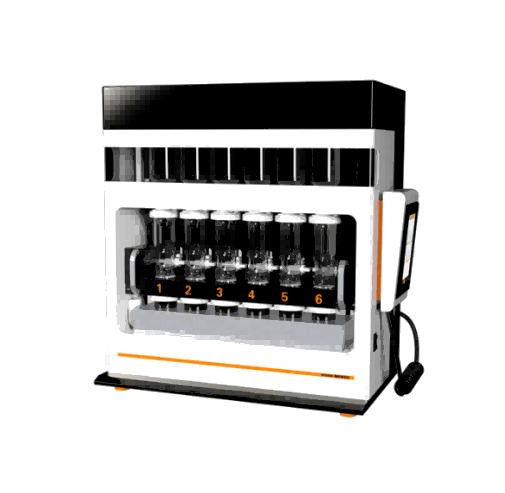In the fast-paced environment of modern laboratories, efficiency, safety, and precision are paramount. Laboratories across the globe are constantly seeking innovative solutions that can streamline processes, reduce manual intervention, and enhance overall productivity. The introduction of automation in laboratory operations has revolutionized how scientists and technicians conduct experiments and analyze results. Among the automated systems making significant waves is the automatic Soxhlet extractor, a powerful tool designed to perform solvent extraction with minimal human intervention.
This article delves into the value of fully unattended operations in your laboratory, highlighting how an automatic Soxhlet extractor can transform your workflow. Whether you're working in environmental science, food analysis, pharmaceuticals, or any field requiring precise extraction processes, the benefits of integrating this automated system are immense.
The Soxhlet Extraction Process: A Brief Overview
Before diving into the advantages of automation, it's essential to understand the Soxhlet extraction process itself. Developed in 1879 by Franz von Soxhlet, this method has been a staple in laboratories for over a century. The Soxhlet extractor allows for the efficient extraction of lipids from solid materials, using a solvent in a continuous loop until the target compound is fully dissolved.
Traditionally, the Soxhlet extraction process required close monitoring by laboratory personnel. The process involves heating the solvent, which evaporates and then condenses within a specialized apparatus, repeatedly washing the sample until extraction is complete. While effective, this manual method demands time, attention, and labor, making it a prime candidate for automation.
The Evolution to Automation: Introducing the Automatic Soxhlet Extractor
The advent of the automatic Soxhlet extractor marks a significant evolution in laboratory technology. This sophisticated system automates the entire extraction process, reducing the need for constant supervision and manual adjustments. By integrating advanced sensors, programmable controls, and safety features, the automatic Soxhlet extractor not only enhances efficiency but also ensures consistency and precision in extraction.
With an automatic Soxhlet extractor, laboratories can perform extractions with minimal human intervention, freeing up personnel to focus on other critical tasks. This shift towards automation aligns with the growing demand for increased productivity and accuracy in scientific research and industrial applications.
Advantages of Fully Unattended Operations
1. Increased Productivity and Efficiency
One of the most significant benefits of fully unattended operations is the drastic improvement in productivity. In a traditional laboratory setting, technicians must constantly monitor and adjust the Soxhlet extraction process to ensure optimal results. This manual involvement not only consumes valuable time but also limits the number of extractions that can be performed simultaneously.
With an automatic Soxhlet extractor, the process is fully automated, allowing for continuous operation without the need for constant supervision. This automation enables laboratories to perform multiple extractions simultaneously, significantly increasing throughput and reducing the time required to obtain results.
2. Enhanced Precision and Consistency
Human error is an inherent risk in any manual operation. Variations in temperature, timing, and solvent levels can lead to inconsistencies in extraction results. The automatic Soxhlet extractor minimizes these risks by maintaining precise control over all critical parameters throughout the extraction process.
Advanced sensors and control systems ensure that the extraction conditions remain consistent, leading to more reliable and reproducible results. This consistency is particularly crucial in applications where even minor deviations can impact the accuracy of analytical data, such as in pharmaceutical research or environmental testing.
3. Improved Safety
Laboratory safety is a top priority, and the automation of the Soxhlet extraction process contributes significantly to a safer working environment. The traditional manual process involves handling hot solvents and glassware, which poses risks of burns, spills, and exposure to hazardous chemicals.
The automatic Soxhlet extractor is designed with safety in mind. Enclosed systems, automated shut-off features, and real-time monitoring reduce the likelihood of accidents, protecting laboratory personnel from potential hazards. Additionally, the reduced need for manual intervention means that technicians can spend less time in proximity to potentially dangerous substances.
4. Cost-Effectiveness
While the initial investment in an automatic Soxhlet extractor may be higher than traditional manual systems, the long-term cost savings are substantial. The increased throughput and reduced labor costs associated with fully unattended operations lead to a faster return on investment.
Moreover, the precision and consistency provided by automation result in fewer errors and less waste, further reducing operational costs. Over time, the efficiency gains and resource savings achieved through automation can significantly outweigh the initial expenditure.
5. Scalability and Flexibility
The flexibility of automatic Soxhlet extractors makes them suitable for a wide range of applications and sample types. Laboratories can easily scale their operations to accommodate larger sample volumes or more complex extractions, without the need for additional personnel.
Programmable controls allow for easy customization of extraction parameters, enabling laboratories to adapt to different research needs or industry requirements. Whether working with small-scale samples or industrial-sized batches, the automatic Soxhlet extractor offers the scalability needed to meet evolving demands.















